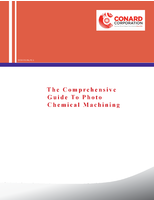ANSI dismisses Construction Industry Employer Coalition appeal.
Press Release Summary:
ANSI Appeals Panel Board dismissed appeal brought by Construction Industry Employer Coalition, a coalition of 5 trade associations of U.S. construction interests, to withdraw adoption of approved voluntary consensus standard "Reduction of Musculoskeletal Problems in Construction". According to ANSI Appeals Board Panel, appeals statement and record filed by Coalition did not establish prima facie case against BSR's earlier decision to uphold approval of standard.
Original Press Release:
ANSI Dismisses Latest Appeal to Withdraw Consensus Standard Aimed at Reducing Musculoskeletal Problems in Construction Workers
DES PLAINES, IL (July 17, 2008) - The American National Standards Institute (ANSI) Appeals Board Panel today dismissed the latest appeal brought by the Construction Industry Employer Coalition, a coalition of five trade associations of U.S. construction interests, to withdraw the adoption of the approved voluntary consensus standard "reduction of Musculoskeletal Problems in Construction" (ANSI/ASSE A10.40-2007), which aims to reduce musculoskeletal problems/disorders (MSDs) in the construction industry. This was the last appeal allowable under the ANSI appeals process.
In late 2006, the ANSI/ASSE A10 Accredited Standards Committee (ASC) on Construction and Demolition Operations approved the standard. Following the approval of the standard by the Committee, the Coalition filed an appeal challenging the standard's adoption, and a hearing was held on May 1, 2007 to hear the formal complaints. On May 25, 2007, the appeals panel found unanimously that the appeal complaints were without merit and that the Secretariat, the American Society of Safety Engineers (ASSE), complied with the ANSI due process requirements in developing the standard. ANSI's Board of Standards Review (BSR) approved the standard on July 23, 2007 after extensive review of the procedures and the record.
During Fall 2007, the Coalition filed a request with ANSI to temporarily retract the approval of the standard, but the BSR decided not to rescind the approval of A10.40 as a consensus standard while an appeal was pending on October 16, 2007. The Coalition appealed the BSR decision on November 9, 2007. The ANSI BSR held the hearing for the appeal on February 7, 2008. The BSR determined after the appeal hearing on March 14, 2008 that its original action to approve the A10.40 as an American National Standard stands. The Coalition appealed again on May 5, 2008, their last appeal under ANSI procedures.
According to the ANSI Appeals Board Panel, the appeals statement and record filed by the Coalition did not establish a prima facie case against the BSR's earlier decision to uphold the approval of the standard. Therefore, another appeals hearing will not be held. The ANSI BSR denied the previous appeal on the grounds that insufficient evidence was provided by the Coalition in support of its appeal to demonstrate that the ASC 10 Committee failed to obtain a consensus of materially affected interests with respect to the A10.40 Standard, that the Committee was unbalanced or dominated by one interest group, that the Committee failed adequately to respond to comments or that any procedural requirements were violated or overlooked.
"National consensus standards, such as A10.40, reflect the insights of the final users and the opinions of professionals who work at all levels of public and private sectors in technology development, safety and health, manufacturing, training, financial analysis, personnel and academia," said A10 Committee Chair Richard King, CSP, CRSP. "This balanced perspective enables standards to be crafted in a manner that benefits and protects standard users."
Some of the potential solutions in the standard aimed at reducing incidence of MSDs include risk elimination, substitution, use of engineering controls, administrative changes, training, use of protective equipment and assessment of individuals' physical capabilities.
The standard also notes that construction workers and supervisors should be trained to recognize risk factors and ways to reduce the risk of MSDs through proper work techniques. Employee participation and injury management program are also discussed in the standard. A10.40 also includes a risk assessment guide, a construction MSD problem checklist, a return-to-work checklist, a list of resources, key terms and definitions and a list of non-occupational risk factors associated with work-related MSDs such as age, strength and gender.
For more information on how to reduce the risk of MSDs in construction visit the National Institute of Occupational Safety and Health at www.cdc.gov/niosh/docs/2007-122/ for its booklet titled Simple Solutions: Ergonomics for Construction Workers. For ASSE's position statement on ergonomics visit asse.org/professionalaffairs/govtaffairs/ergonomicsfinal0406.php.
Founded in 1911, the Des Plaines, IL-based ASSE is the largest and oldest professional safety organization and is committed to protecting people, property and the environment. Its more than 32,000 occupational safety, health and environmental professional members manage, supervise, research and consult on safety, health, transportation and environmental issues in all industries, government, labor and education. For more information check ASSE's website at www.asse.org.




